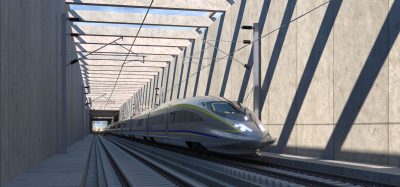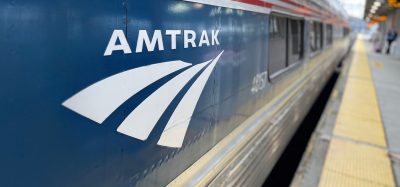Innovation and experience
Posted: 10 December 2010 | | No comments yet
The ÅF Group is a leader in technical consulting, with expertise founded on more than a century of experience. The ÅF Group offers highly qualified services and solutions for industrial processes, infrastructure projects and the development of products and IT systems. Today, the ÅF Group has approximately 4,000 employees. The company is based in Europe, […]
The ÅF Group is a leader in technical consulting, with expertise founded on more than a century of experience. The ÅF Group offers highly qualified services and solutions for industrial processes, infrastructure projects and the development of products and IT systems.
Today, the ÅF Group has approximately 4,000 employees. The company is based in Europe, but their business and clients are found all over the world, and net sales in 2009 totalled approximately SEK 4.7 billion.
The railway sector
An increasing part of ÅF’s consultancy work focuses on coordinated project planning in the areas of railway systems within the framework of various infrastructure projects. The ÅF Group is constantly expanding its expertise in these areas, in order for them to remain one of the market’s most interesting partners for infrastructure projects in this field of excellence. The ÅF Group can contribute to the entire project planning and engineering process from drawing the railway plan right through to the finished system, including final updates for as-built and operational documentation.
The Oslo–Ski rail project
The Oslo–Ski project is the biggest upcoming railway project in Norway and a separate line item in the national budget. The project encompasses a new double-track (the Follo line), a new station at Ski, a passing loop at Ås and a cut-off at Bryn. Today, capacity on the Østfold Line is stretched to the limit. Improving capacity south of Oslo is vital in order to increase rail transport locally and nationally – for both freight and passenger traffic.
The Follo line
The Follo line is a new 22km double-track line from Oslo to Ski. It will include Norway’s longest rail tunnel, consisting of twin tubes each 19km-long. The earliest possible start date is 2013, and given a realistic construction schedule, the Follo line is likely to open in 2018.
Ski station
Construction work at Ski station began in 2010. The station is to become a modern transport hub in downtown Ski and is being redeveloped in several stages. The work includes accessibility improvements for all users, expansion to six tracks, new platforms and a new service building.
The Ås passing loop
The Ås passing loop consists of two 750m-long lengths of track on which freight trains can be held, allowing faster passenger services to overtake them. During the remodelling of Ski station, the tracks will also serve as turn-backs for local trains. The first step is to obtain the necessary zoning permits for the site, and construction is scheduled to start in 2012/13.
The Bryn cut-off
The Bryn cut-off connects the Follo line tunnel with the freight lines into Alnabru yard. By building the cut-off at the same time as the Follo line, Jernbaneverket can avoid future disruption of services for construction work.
A thriving region
The railway links the communities in the region. Oslo, Akershus and Østfold have a combined population of 1.4 million. In 2008, Akershus and Østfold accounted for 48% of NSB’s annual passenger traffic from Oslo to the regions of Norway. Almost 150,000 passenger journeys a day use the southern corridor beyond Oslo’s city limits. The number of people and jobs in the region is expected to increase 30% by 2025. The Follo line and the Østfold line together can accommodate this growth.
Combined benefits of the Follo and Østfold lines
Once open, the journey time for the fastest Oslo–Ski service will be cut from 22 minutes to just 11 minutes. The train service will improve significantly for commuters and other rail users. There will be fewer delays and capacity will more than double. Express trains will use the Follo line, freeing up capacity for more commuter services on the Østfold line.
The Follo line will make public transport a more attractive option, increasing by 70% the number of rush-hour passengers arriving at Oslo central station. This equates to 5,800 fewer car journeys each workday and a reduction of 5,500 tonnes in annual CO2 emissions.
Moving freight from road to rail
The Follo line will more than triple the volume of rail freight in Østfold and Akershus. The Follo line will increase capacity for freight trains at peak times, resulting in 750 fewer transport trucks on the roads each workday, and potentially cutting annual CO2 emissions by 30,000 tonnes. A freight train can transport the same amount as 24 fully loaded tractor-trailers. Gateway to Europe The Follo line is the gateway to Europe and will be the first stage in a high-speed line linking Norway to the Continent. The Oslo–Gothenburg–Copenhagen route is included in the Norwegian government’s highspeed study. The Follo line will be compatible with a future high-speed line.
Twin tubes for maximum tunnel capacity
Maintenance and safety work has to be planned well in advance. With trains continuing to run in one tube, the work can proceed without interruption in the other tube. Detailed studies have shown that twin tubes are the most reliable option for such a long tunnel.
Geology and contact information
The bedrock of the project area consists of Precambrian gneisses and dikes or layers of amphibolite/metadolerite.
The bedrock is mainly of good rock quality for rock excavation. The gneisses often have large joint spacing, but fracture and fault zones are expected along the tunnel alignment.
Laboratory testing of rock samples have shown that the gneisses and amphibolites have high uniaxial compressive strength.
Planning for the future
A project on such a large scale has the potential to adversely affect people and the natural environment during construction. Thorough planning is therefore essential to keep costs, progress and environmental impact under control. Jernbaneverket is the first organisation in Norway to produce a green budget governing the choice of materials and solutions.
Fast, safe construction
Jernbaneverket aims to build the Follo line as quickly as possible, without harming people or the environment. A safe, watertight tunnel is crucial to the project’s progress. If we devote maximum effort and resources to tunnelling work, construction is likely to take 5-6 years to the best of our current knowledge. We are considering both blasting and a tunnel boring machine as options for tunnel construction.
Oslo central station is the hub of Norway’s passenger rail network. The Follo line will run through a densely populated region rich in cultural heritage, so there will be many crucial factors to consider in the planning process. In railway engineering terms, too, feeding two new tracks into the busiest part of the Norwegian rail system will be a complex challenge.
The ÅF Group’s involvement
Speaking about the new Oslo-Ski double-track project, Mr. Per Fahlen, an ÅF Representative working on the project, commented: “The project is still in a very early stage, with the ‘masterplan’ expected to be finalised in January 2011. My involvement, as a representing for the ÅF Group, is working to help finalise the Masterplan. The ÅF Group is extremely proud and excited to be involved with what is definitely the biggest upcoming railway project in Norway.”






